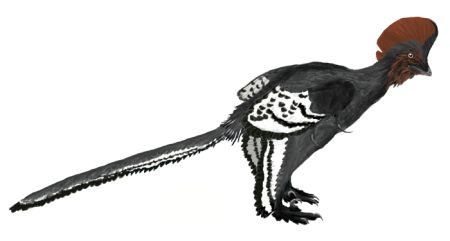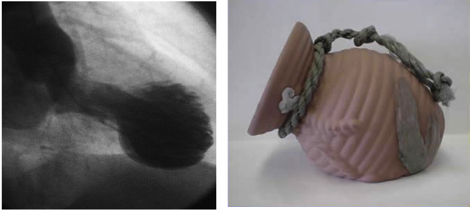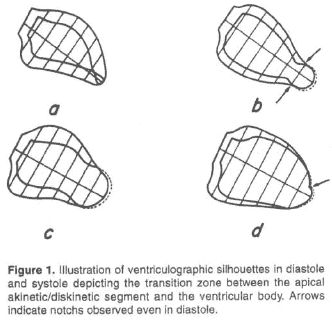The Brazilian blog network: learning to fly

Bora wrote an insightful post about the advantages and disadvantages of blog networks and how he sees they would work in a post-Diaspora blog ecosystem. I thought it would be interesting to compare his views and experiences with blog networks with ScienceBlogs (SB) with my vision of the history of the much smaller network, ScienceBlogs Brazil.
What
ScienceBlogs Brazil (Sb.br) was not born this way. Back in 2008 – an eternity in Internet time – Atila Iamarino and I decided that a science blog network could make the number of Brazilian blogs about science grow faster. At the time, blogs were starting their exponential expansion in Brazil and there were less than a dozen active science blogs older than a year (and there was us). In August 2008, we managed to launch the blog network Lablogatórios, heavily inspired by SB, with 18 blogs. Two days after our launch, to our great surprise, we were contacted by SB: the network we aspired to be was inviting us to join then. In March 2009, SB.br was launched and we now have around 30 blogs.
Why
Atila and I like to read about Science but there were not enough blogs written in Portuguese to ease our hunger. Moreover, science education in Brazil is deficient and there is a great need for science communication projects. We believed that we could not wait to have a lot of science blogs to make a network, instead we decided to build a network to make a lot of science blogs. The plan was straight forward: we would make a network to attract readers to the few Brazilian science blogs and this would make more people interested about blogging about science. I think this is when a network is beneficial to its bloggers: it is a way to streghten small niches.
How
When we started inviting blogs to our network, we used three criteria: it should be accurate, it should be well written and it should be frequent. The first bloggers that were invited were the older bloggers but just a few of them accepted, then we invited a few promising bloggers and started some blogs from scratch. When we launched, we had just 4 blogs that were older than a year, 3 brand new blogs and 11 young blogs. Bora mentioned that SB attracted about 10% of the science blogging community. I estimate that we attracted around three-quarters of the active blogs at the time. If the use of popularity as selection parameter biased SB blogger diversity, scarcity biased ours.
The most noticeable bias was our initial female:male ratio (1:8), which was unacceptable (even for Brazilian standards). Also, half of our bloggers were from the state of São Paulo – the richest in Brazil. Finally, we had a massive number of blogs about biology. We have been fighting to increase our gender, regional and subject diversity. Now, our female:male ratio is 1:3, which is the same of the Brazilian bloggers ratio, and bloggers from many other states were incorporated.
One curious aspect of our history was how our strategy to incoporate new blogs evolved with time. In the begining, Atila and I were decided to bring in every blog that was considered good enough. This helped our increase our numbers very fast, specially after we became SB.br. However, a large influx of new bloggers started damaging the sense of community inside the network. We now open two new positions every semester – with occasional special invitations in-between. The new bloggers are not chosen by the “overlords” anymore: they are voted by their future peers. We also have a “test blog” for new authors, a place for people who never blogged to have a go before getting their own blog.
In the technical aspect, Lablogatórios was built in WordPress MU, which was very easy to manage. Our traffic was light enough to let us have a virtual dedicated server. This meant that the site was not costly and the few rupees we manage to gather with adsense and the only ad banner we sold were just enough to pay the bills. In this aspect we benefited hugely becoming SB. We were aware that many successful sites had financial problems due to server costs and other maintenance cost due to heavy traffic. SB.br was so smaller than SB that even MT4 behaved well enough.
What is working
I think the main strength of SB.br is the cohere community forged in the backchannel. We are small enough to have a manageable email lists, where we can bicker friendly away from the public eye. About a third of our bloggers are not engaged in this list but they still maintain some contact with the other bloggers. Moreover, I think I can brag that the fact that Atila and I are also bloggers in the network helped our job as community managers. The fact that we are also the founders of the network also give us enough authority to stop arguments that get… uncivil. We also frequently discuss the future plans for the network with the rest of the community, which reduces the burden of planning our future ahead.
The decision of stop bringing so many new bloggers into the network also helped strengthening the community of science blogs outside SB.br. It is really important to us not to be seen as the best Brazilian science blogs or to give the idea that the only good blogs are the ones in the network. This would certainly hurt our goal to make the number and the quality of Brazilian science blogs increase, as it has been happening even before Lablogatórios.
When we entered the SB we were surprised with the differences in the community dynamics between SB and SB.br. Communication among bloggers in SB always seemed too aggressive and communication between them and the SB overlords was almost null. These two characteristic – that emerged as consequences of SB history – only helped to fuel the Diaspora that was triggered by PepsiGate.
What is not working
Every time a group is formed, the concept of “us” and “them” automatically arises. It is very tempting to defend our Labrothers when they are attacked, grouping on the attacker. It also easier to link each other than blogs outside the network. The fact that we talk a lot in the backchannels also helps to develop a hive behaviour, the same Borg concept used to describe SB, as ideas emerge to the public as a consensus after being widely discussed in private. This affects the way we relate with other bloggers and to our readers. For example, people frequently judge the whole network by the behaviour of a few bloggers. If one of us mistreat a reader (deservingly or not), the blame usually falls on the network.
The feeling that we have the “best science blogs” is also a problem as it takes attention from excellent blogs that are found outside the network. This “best blogs” syndrome also makes easy to interpret any personality traits we have (such as short temper, introversion, extroversion, etc) as a sign of arrogance. The network help us share relevance and credibility but it also makes us share our vices.
In the technical aspect, joining SB solved a lot of our problems but it also created some others. The freedom we had to customize the platform and the homepages greatly reduced. There is some evidence that search engines likes this plaform less than our previous one and MT4 is too complex for new bloggers.
Learning to fly
The history of blogging in Brazil has a delay of two or three years when compared to the blogs written in English. Thus, when we see what is happening “out there”, we are a seeing our potential future. Blogs about science have been growing in numbers for some time, most of science journalists have their own blogs and other media are starting to notice us as well. It is also possible to see people trying other media such as podcasts and videocasts. Sophistication is only happening now for us but the question of how to aggregate everything is already on our minds.
SB.br is becoming less and less dominant in the Brazilian science blogging ecosystem, and this is good because it keep us from going stale. Bora had this interesting image of SB being big, dangerous dinosaurs roaming around the blogging ecosystem. And PepsGate definitely seemed like the triggering event that will drive these dinosaurs extinct. In this sense, the SB Diaspora worries me a lot, is this also the future of the Brazilian dinosaurs?
We might, but now that we have the foresight, we will do everything to become birds.
Image from Wikipedia
Broken heart syndrome and the flagellated heart
This is another one of those unlikely situations that insist on existing. Could a very strong emotion cause a cardiac alteration so severe capable of causing someone’s death?
I’m not talking about arrhythmia. Electric alterations in the heart could make it lose its regular rhythm and, possibly, create a situation where there is, in fact, a cardiac arrest. Arrhythmias may be caused by a number of factors, including electrolytic disorders, traumas, drugs, as well as emotions.
What I am talking about are anatomical alterations, detectable by examination, like echocardiogram or ventriculography done during catheterization. Is it possible for a strong emotion to cause a heart failure?
Yes, it is possible. And this clinical situation is called cardiomyopathy of takotsubo, also known as transient apical ballooning syndrome, apical ballooning cardiomyopathy, stress-induced cardiomyopathy, broken-hearted syndrome or simply stress cardiomyopathy. Takotsubo is a cage for catching octopus in Japan. Due to its balloon-like shape, it was compared to the shape of the heart of someone who suffered a very strong emotion and got seriously compromised (see pictures below).

Left. Ventriculography showing large anterior dilation of the heart. Right. Takotsubo jar.
Cardiomyopathy means, literally, “heart muscle disease”. In this case, always a kind of weakness. Because with this disease the weakening follows a strong emotional reaction -loss of children or spouse, for example- it was named “broken heart syndrome”. It is a known cause of lethal arrhythmias and even ventricular rupture, such is the thinning of its wall. The good news is that, after the acute, more dangerous phase, the recovery is complete (ad integrum) without sequellae.
Recently, an article drew attention to the fact that these patients may present themselves in a state of cardiogenic shock that prevent organs from functioning properly because of inadequate blood flow and arterial pressure, such is the heart failure, requiring intensive care resources. In the article, the authors show clinical, laboratorial and echocardiographic differences in patients.
Reading the article I had a brilliant idea!
I could not help remembering my pathology classes where I saw several hearts infected with Chagas disease, a true Brazilian plague.

Many of those hearts present what pathologists call “aneurisma de ponta” (tip aneurysm) (see image on the left, from the excellent article by Eduardo Nogueira from UNICAMP).
This aneurysm of the left ventricular apex is very similar to that produced by the dilation of takotsubo cardiomyopathy.
According to the late professor Köberle, from USP – Ribeirão Preto, the explanation for the tip aneurysm in Chagas disease is an imbalance between the sympathetic and the parasympathetic autonomic nervous systems. Parasympathetic nerve endings disappear from myocardial tissue and there is a sympathetic hyperactivity, “sufficient enough to cause myocardial lesions”. Köberle managed to reproduce the same kind of injury in mice by injecting adrenaline, the hormone of the sympathetic system.
My brilliant idea was to imagine that the explanation for the takotsubo cardiomyopathy was the same! Strong emotions cause an overload of sympathetic stimulation on the heart and could -why not?- cause an anatomic alteration similar to the tip aneurysm of Chagas cardiomyopathy.
I was feeling pretty smart and thought of sending an article to an international cientific journal.
But, as with almost all of my brilliant ideas, someone else got there first.
And, to keep my readers from posting that reference before I do, here it is (also down there at the bottom).
Medal I shall not receive for deserve I do not.
Was gonna write a paper, wrote a blog post instead. Meno male.
Images:
Ventriculography: Nature Medicine; Takotsubo jar: Canadian Journal General Internal Medicine.
Wittstein IS, Thiemann DR, Lima JA, Baughman KL, Schulman SP, Gerstenblith G, Wu KC, Rade JJ, Bivalacqua TJ, & Champion HC (2005). Neurohumoral features of myocardial stunning due to sudden emotional stress. The New England journal of medicine, 352 (6), 539-48 PMID: 15703419
======================================
Originally written by Karl, published in portuguese at Ecce Medicus






